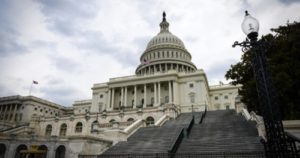The world has just been through a deadly pandemic that claimed millions of lives. It was the one event that proved the importance of medical care facilities in a nation. Since the threat of COVID waves is not yet over, medical care would need more resources and support from the federal government without any doubt.
On the other hand, Congress had a plan of reducing the allocations in the medical sector that many sensed as an impending danger. A medical pay cut would make both physicians and their beneficiaries vulnerable.
However, in its latest legislation, Congress has settled for a bipartisan deal to waive the due Medicare cuts. The whole of the medical care domain, including radiology has embraced this decision warmly and praised Congress for such a visionary move.
Physician Rep. Steven Horsford of D-Nev., and Rep. Kim Schrier, MD of D-Wash., have introduced this legislation on 7th December to blunt the reimbursement reductions due on January 1 as well. The bill has also provided for an increment of 3% of the fee schedule of the Medicare physicians. Most people expected the increment to be as high as 3.75%. However, the speculations fell a little short of the real margin.

The Bill
Schrier mentioned in a statement that a Pandemic is never the time for reducing doctor-patient accessibility. According to her, this legislation might restore Medicare payment stability. Therefore, the patients could continue to visit the doctors, and the doctors can continue to offer valuable medical services.
The world has seen how effective and essential the doctors have been as frontline workers during the pandemic. Hence, access to physicians should not get impeded at any cost.
The bill further clarified that for the first three months of 2022, 2% of the Medicare sequester payment cuts would get delayed. However, for the next three months, a 1% reduction will remain applicable.
The bill also provided for a reduction in the fee schedules of clinical laboratories and a postponement of payment models for radiation oncology. The legislation also encompassed halting the 4% PAYGO cut until 2023.
Several physician groups along with The American College of Radiology commended the legislation as it would neutralize a major share of the reductions due on January, 1. The California Medical Association, American Medical Association, and Surgical Care Coalition are some other noteworthy organizations that voiced their support.
The Outcomes
On one hand, many expect that these provisions will strengthen the healthcare system and its services. On the other hand, policymakers are hopeful that these legislations would solve the longstanding problem of Medicare’s payment systems. The ACR urged the legislators of the Senate and the House to pass the bill as early as possible by the end of this session.
The Radiology Management Association mentioned that the reductions would be around 3% for diagnostic services of radiology. The amount would be higher for interventional sides. The estimation included 1.25% sequestration reductions over the whole year on average.
The initial estimate was a whopping 10.75% reduction in reimbursement. The bill passed in the House with 222-212 votes. The Senate will look into the provisions of the bill later.
No matter the laws and the legislations, the quality of the healthcare system always relies upon quality diagnostic services. At Sepstream®, we ensure upgraded and latest imaging solutions for fast and flawless disease detection. Explore our gamut of software solutions and AI integrated imaging services to superior healthcare services at the best prices.